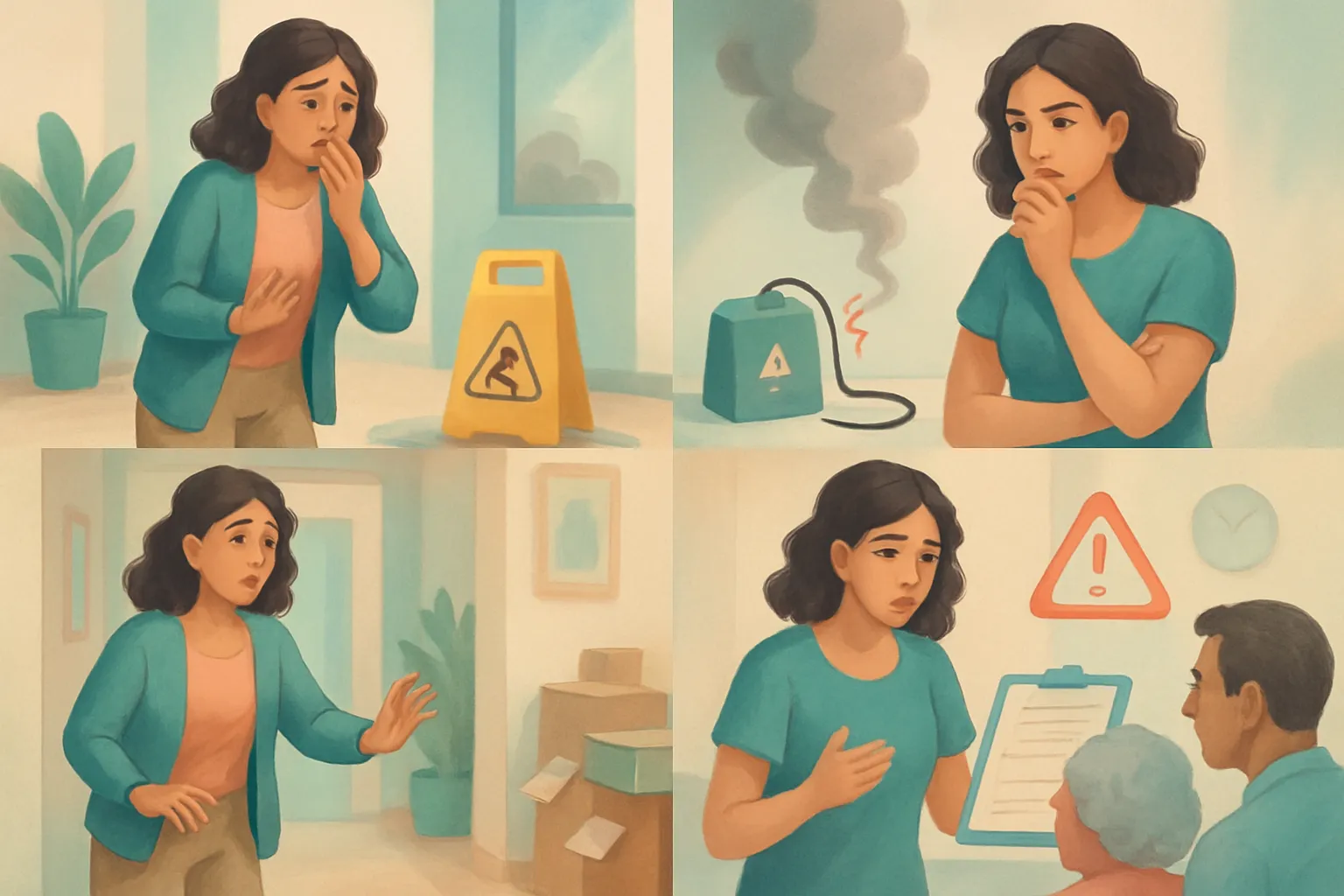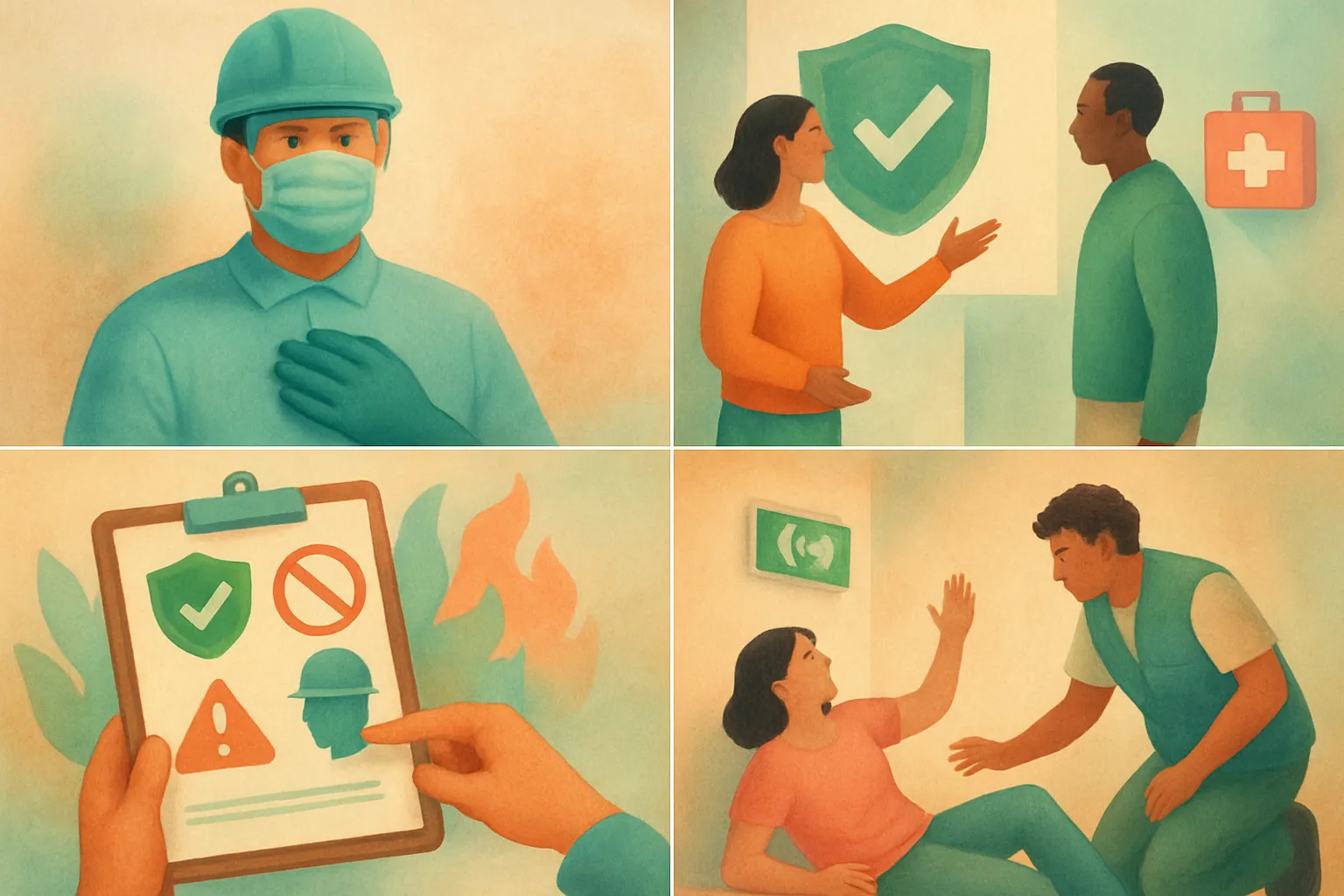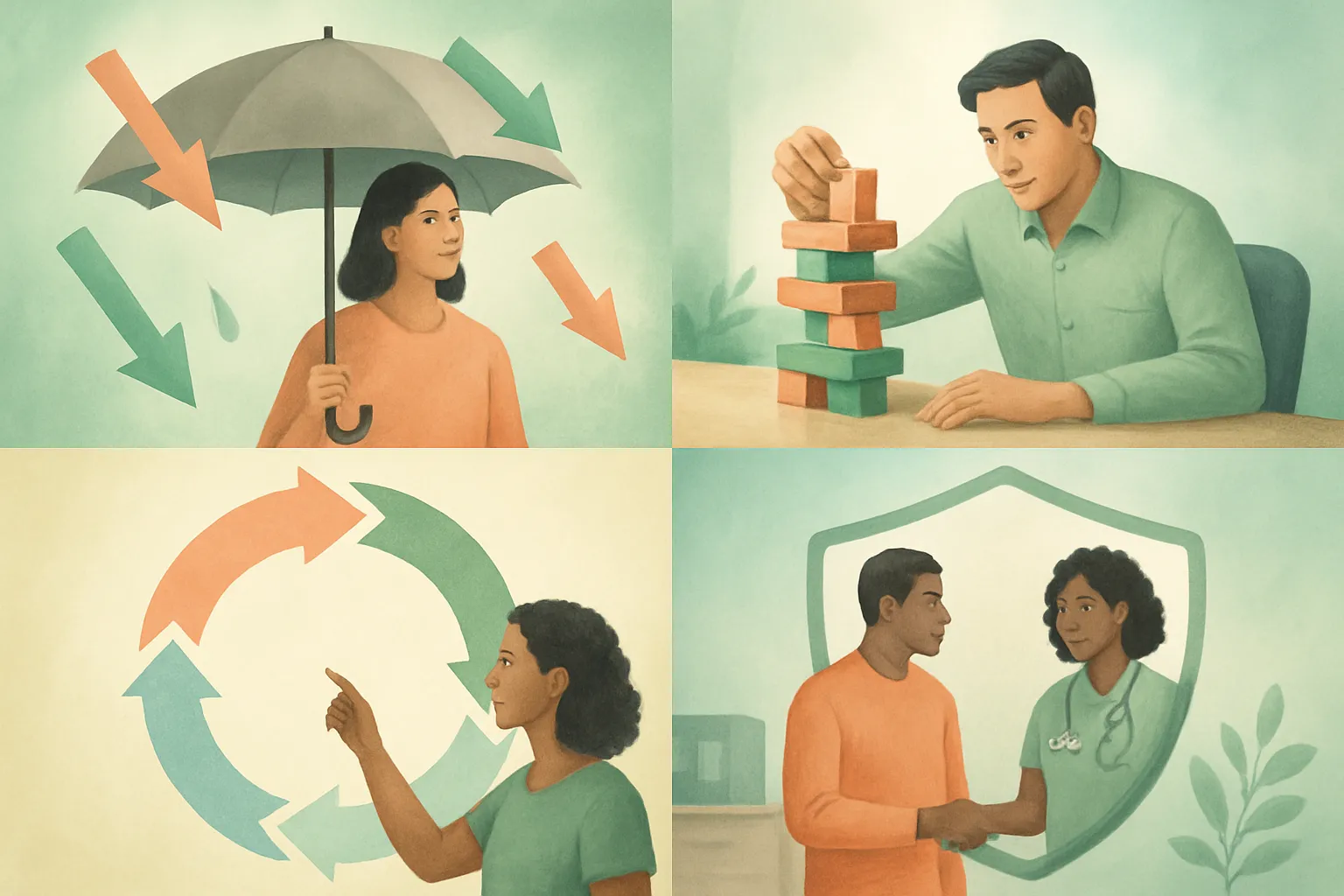Curriculum
- 15 Sections
- 15 Lessons
- 2 Weeks
- Understanding Your Role2
- Duty of Care2
- Equality and diversity2
- Person-centred care and empowerment2
- Communication2
- Privacy and dignity2
- Fluids and nutrition2
- Awareness of mental health, dementia and learning disabilities2
- Safeguarding adults2
- Safeguarding children2
- Basic life support2
- Health and safety2
- Handling information2
- Infection prevention and control2
- Understanding learning disabilities and autism2
Curriculum
Health and safety
Learning Objective:
Understand health and social care core values and legal frameworks, including hazard recognition and safety measures.
Recognize potential hazards

Potential Hazards are elements that could cause harm or adverse effects in health and social care settings. Recognizing hazards is vital for ensuring the safety and dignity of care recipients, aligning with the Care Certificate’s aim. These hazards range from physical hazards like slippery floors or cluttered walkways, to environmental hazards such as inadequate lighting or faulty equipment, and organizational hazards like poor communication or inadequate care plans. Underpinning this is the Health & Safety Act, which mandates that hazard recognition is essential to workplace safety.
- Trip Hazard
- Infection Risk
- Equipment Malfunction
A physical condition like slippery floors; may lead to falls and injuries affecting patient safety.
Presence of pathogens which may lead to infections, compromising health outcomes if not controlled.
Failure of medical or care equipment, potentially causing harm through improper use or lack of functionality.
Deeper Dive into Hazard Identification
Identifying subtle hazards requires attention to detail. Look for environmental clutter, worn-out equipment, or cluttered areas. If a hazard is detected, assess the risk and determine corrective action. Understand that speedy reporting and documentation are crucial to mitigate risks, in line with legal responsibilities under the Health & Safety framework.
Implement safety measures

Safety measures are essential in care environments to uphold the values of dignity and respect. These measures can be proactive, like using personal protective equipment, or reactive, such as setting up emergency protocols. Key legal aspects from the Health & Safety Act emphasize the responsibility of each care worker to ensure a safe environment for everyone involved.
- Identify the Risk/Hazard
- Assess the Impact
- Apply Safety Measures
- Document and Report
Refer to the potential hazards identified previously.
Evaluate how severe the risk is and decide on appropriate actions.
Use signage, cordon off risky areas, or set up maintenance alerts.
Ensure that the measures taken are logged and communicated up the chain.
Understanding risk management

Risk Management involves systematic processes to protect care recipients and staff from harm, promoting a person-centred care environment. It operates within a cycle: identification, assessment, mitigation, and monitoring. This cycle ensures that risks are continuously evaluated and managed, aligning with legal requirements such as the Health & Safety and Care Acts.